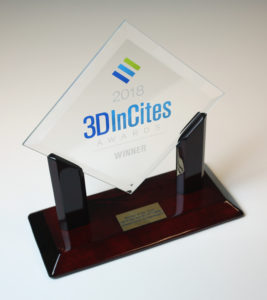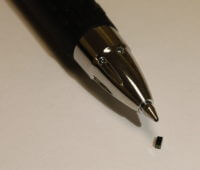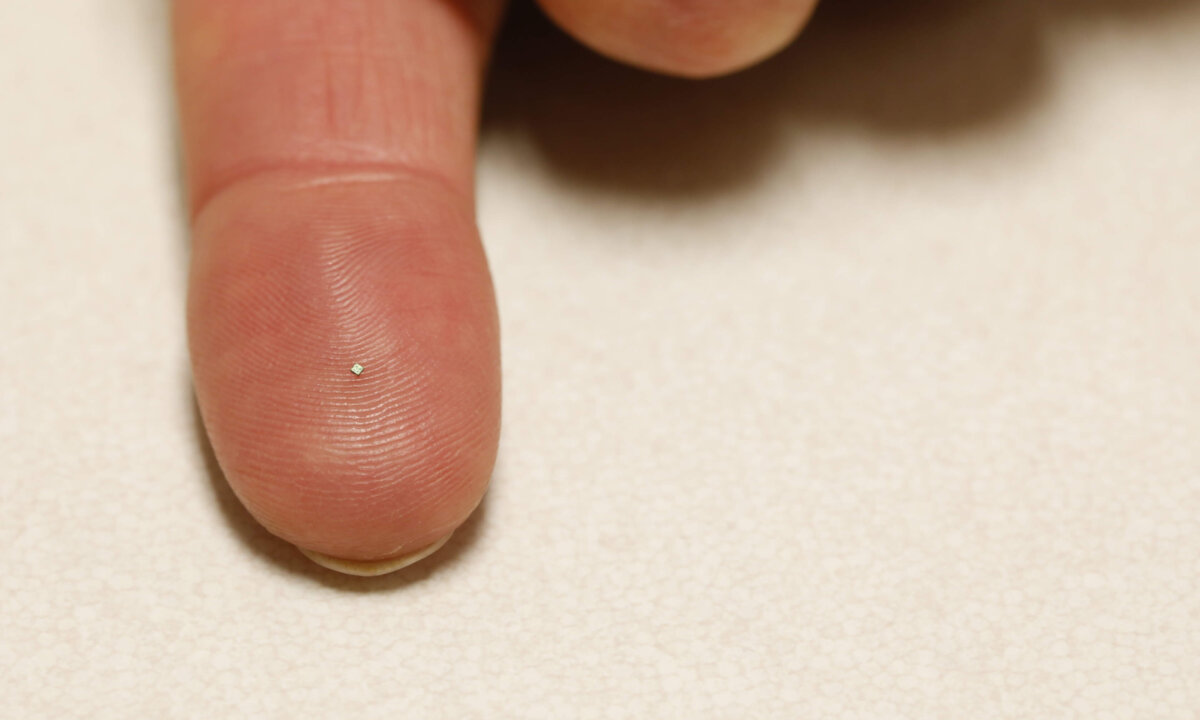
Digital imaging has come a long way since its first consumer implementation in digital cameras to replaced film cameras in the early 21st century. In fact, digital imaging technologies have become so varied and advanced thanks to CMOS image sensor technology, integrated circuits (ICs), and advanced packaging that almost anything can have camera capabilities integrated into it.
As part of our 3D InCites Award Winner’s series, I recently interviewed, Boyd Fowler, CTO of OmniVision, winners of the Device of the Year category (Figure 1). We talked about current drivers of digital imaging, OmniVision’s focused approach to its technology development, and discuss how the company is enabling imaging in new application spaces through the use of 3D integration technologies.
Development Drivers
According to Fowler, drivers of digital imaging technology have converged to two distinct paths: digital photography and machine-vision applications. The former has been the main driver for some time. The latter is a relatively new and growing market space.
Even while smartphone sales have slowed, improved camera quality is one feature that still entices consumers to upgrade their phones. This is likely why the most significant improvements Samsung made to its Galaxy S9 phone, released in February, were to its camera.
“Nowadays, everyone expects the quality of a large DLSR camera used for sports photography in their smartphone so that they can, for example, take their own high-quality pictures of their kids playing soccer,” said Fowler. Even before the smartphone, improving digital camera quality with smaller pixels and smaller lenses has been a key motivation for technology development over the past 20 years, he noted.
Even more intriguing to me than advanced smartphone cameras are the machine vision applications driving new developments in imaging technologies. From autonomous vehicles, medical devices, and miniaturized security cameras, to every-day internet of things (IoT) devices for your smart home, machines that can see will enable fundamental changes in our lives.

Fowler explained that in machine vision applications, the cameras are not used to capture images that will be seen by human eyes, but rather allows the object itself to “see” its surroundings. Machine vision is critical to autonomous vehicle safety systems for back-up and surround-view camera systems, as well as for tracking driver alertness. In medical devices, miniature cameras in endoscopes and catheters minimize the invasiveness of diagnostic testing and surgeries. Facial recognition applications use machine vision to identify the user and allow access to the object to unlock your car or home, give you access to your computer, or even make your coffee the way you like it. (FIgure 2) “Ten years down the road, everything you own could have a camera in it,” he predicted.
The Elephant in the Room
As cool as the idea of cameras everywhere seems to be, to me, there’s something very Orwellian about the whole concept. That, combined with my recent obsession with the readiness of autonomous vehicle technologies, inspired me to ask about privacy and safety.
I was happy to hear that Fowler shares my concern. He assured me that OmniVision doubles down on the reliability of their devices, particularly those designed for use in automotive applications and medical devices. In smartphones, if the image sensor fails, it’s no big deal. In automotive and medical applications, it could be a life or death situation. Safety always trumps cost in digital imaging technologies for these markets.
“High reliability is mission critical for the automotive and medical markets, but the industry doesn’t always see it that way,” he said. “We consider our automotive and medical image sensors almost as a separate business from our consumer segments to ensure their reliability. People’s lives are at stake. If you make a mistake you might kill someone. We think about that. Do we want these devices used on a family member or a friend?”
He also (somewhat) quelled my Big Brother concerns about a camera in every object we own. OmniVision prioritizes digital security by making the devices difficult to hack, and by ensuring that the data is encrypted so that it’s not accessible to other humans; only the machine itself. “Security is a key focus area of new technology development for the company. We are addressing security concerns up front rather than later,” said Fowler. “It’s a challenge to keep up with the rapid changes, but OmniVision’s goal is to continuously improve in that area.”
Finding New Applications
Of course, not all novel imaging applications pan out as originally expected. For example, Google’s first attempt at “smart glasses” failed abysmally, and Intel recently abandoned its foray into augmented reality glasses. With so many applications clamoring for image sensor technologies, how does a company like OmniVision decide where to focus development efforts?
Fowler explained that as a market-driven company, while new technology development often begins with direction from a customer, they also do plenty of their own market research by attending conferences and working with different vendors who follow industry trends to make sure they are following important trends. They also diversify efforts by investing in multiple projects at the same time. Additionally, before diving into the deep end, they will do their own research to validate a technology trend’s interest to multiple customers. “We prefer not to enter into exclusive relationships, but rather invest our own R&D funds to develop something that we can sell to everyone in the market,” noted Fowler.
Digital Imaging Challenges
Over the past 20 years, there have been numerous technologies challenges to overcome to meet the level of advancement of today’s digital imaging technologies. Topping the list is reducing pixel size, which has shrunk from 6-µm to less than 1µm over the years. Reducing dark current and read noise to make images as clean as possible has been another challenge, as has been improving quantum efficiency.
“The recent introduction of our Nyxel™ near-infrared technology has greatly improved quantum efficiency,” noted Fowler. Additionally, because mobile and IoT devices are battery driven, power dissipation in terms of Watts per mega-pixel has become important for today’s digital imaging technologies, particularly since pixel data rates have increased more than 100-fold, explained Fowler.
Lastly, while not a technical issue, per se, cost reduction has been another hurdle to overcome. “20 years ago, CMOS image sensors were boutique technologies and very expensive,” said Fowler. “While performance is increasing, the expectation is that the price will drop. Perpetuating that is an ongoing challenge.”
The Role of 3D Integration
CMOS image sensors generate large amounts of data that needs to be processed before it is transmitted. However, the semiconductor process that is optimal for collecting photons is not the same process that is best for signal processing. So how do we build a device that delivers the best of both worlds? According to Fowler, stacking technologies, in which pixel technologies and signal processing are separated onto different wafers and then vertically integrated, have saved the day. The top wafer is built with an older photodetector process that provides better images and is lower cost. The bottom wafer uses state-of-the-art approaches for digital processing. In this way, OmniVision achieves improved performance at the right price.
Particularly in the mobile space, wafer stacking has become critical as demand for ever-thinner phones increases. Fowler explained this requires an optical stack comprising a same-size lens, photodiode, and circuitry to enable thinner, more compact camera modules.

Call to Action
What does OmniVision still need from the advanced packaging sector to respond to industry demands for smaller, better-performing cameras for high-reliability industries, like autonomous vehicles and medical devices? According to Fowler, today, the packaging used to meet reliability requirements ends up being larger and bulkier than other camera modules. What is needed is high reliability combined with very small packaging (Figure 3).
“We build the world’s smallest image sensors. The challenge is finding the right packages and interconnects to build catheters with them for looking inside the heart, blood vessels, etc,” said Fowler. “They need to be incredibly small, low cost, and biocompatible.” Additionally, they are searching for cost-effective ways to package multiple dies in a single package.”
Does your company have the solutions? Let me know. I’d be happy to make the introduction. ~ F.v.T





















